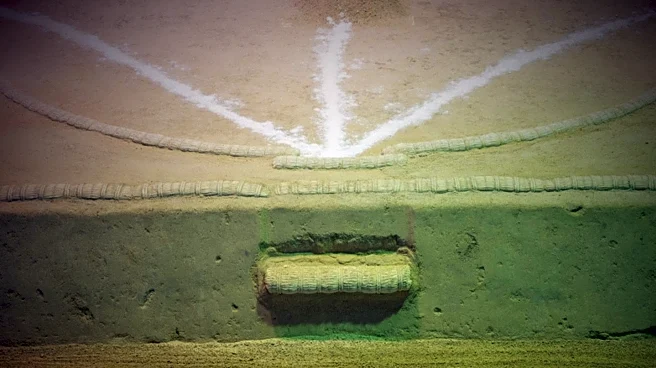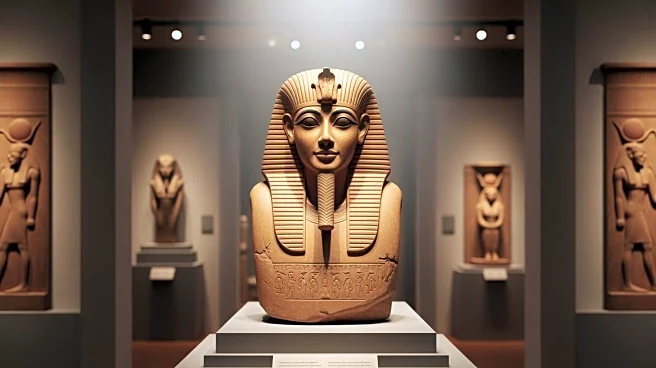What's Happening?
Researchers from Cairo University and the Technical University of Munich have discovered two hidden voids within the Pyramid of Menkaure in Giza, Egypt. These voids were detected using non-destructive imaging techniques as part of the ScanPyramids project.
The Pyramid of Menkaure, the smallest of the three main pyramids at Giza, has long puzzled archaeologists due to an unusual feature on its eastern facade. The newly discovered voids, located behind the pyramid's outer facade, may indicate the presence of a lost entrance. The study utilized georadar, ultrasound, and electrical resistance tomography to reveal these air-filled cavities, which vary in size and depth.
Why It's Important?
The discovery of these voids could provide new insights into the construction and purpose of the Pyramid of Menkaure. Understanding the layout and hidden features of the pyramid may help archaeologists uncover more about ancient Egyptian burial practices and architectural techniques. This finding also demonstrates the effectiveness of modern non-destructive testing methods in archaeology, allowing researchers to explore historical structures without causing damage. The potential identification of a lost entrance could lead to further discoveries within the pyramid, offering a deeper understanding of ancient Egyptian civilization and its monumental architecture.















